Deanston… what can I say about Deanston… I have this mental film-reel in my head of a Burn Stewart middle-manager tasting a 12 year-old cask sample in the Deanston warehouse after taking over ownership of the previously shuttered distillery. He frowns, cocks his head, and says “Well, it’s garbage, but we can probably sell it if we ride a trend. What are they clamoring for right now? Natural? Hand-made? Non-chill-filtered? That’ll work. Bottle it up, boys! I have a meeting with Marketing.” I’m being harsh (and anachronistic, Burn Stewart took over ownership in 1990), but I have trouble imagining a worse poster-child for the Craft Whisky Movement (TM) (c) (patent pending). It has everything on paper that whisky buffs have been asking for: 46% “craft presentation” bottling strength, non chill-filtration, and no added coloring. It’s made more-or-less by hand and with traditional methods. It’s even located in a picturesque reclaimed mill building. On paper, I should love it!
Actually I had one surprisingly tasty Deanston. It just didn’t have a Deanston label on it, more’s the pity. (Update: The 18 year is quite good, if you can get a reasonable price…)
So I thought maybe I’d climb up the age (and price) ladder and see if Deanston starts to shine after it leaves its NAS infancy. Luckily, I found a glass 50ml miniature of the 12-year (aged in ex-bourbon casks) at a liquor shop. I’ve had good luck with glass miniatures not having off-flavors (unlike plastic ones). Does it redeem the Deanston name for me, and let me buy the “Craft” hype?
Nose: Floral, with notes of rosewater and orange blossom. Delicate aromas of peach, white tea, filtered honey, fresh spring water, and a slight nose tickle (alcohol).
Palate: Medium body. Initial tongue burn leaves primarily hay and toasted malt. Some woody character, like bark, but none of the delicate flowers or fruits promised by the aroma. Fairly earthy, with some of those hay/bark notes verging on peat.
Finish: Short. A continuance of the palate, with more bark and hay. As it fades, it reveals faint banana and coconut.
With Water: Several drops of water seem to wash out the delicate aroma, leaving a hint of fresh laundry and ozone. The palate becomes somewhat sweeter, with a vanilla note. The finish becomes a bit brighter, with a reprise of the peach notes. I’d avoid water with this because of what it does to the aroma.
Overall: Well, I had high hopes, but this is another Deanston dud for me. The nose promises so much, with its airy insinuation of peach and honey and orange blossom flavors to come. Instead, you get a mouthful of hay and some muddy puddles of peat water. I exaggerate, but the flavor is definitely a let-down, and it’s not redeemed by the vague finish. If I had to drain a bottle of this, I could manage it, but I wouldn’t fork over actual cash for a bottle, even at $50 (didn’t you hear? $50 is the new $30 in whisky). Actually, you might be better off pouring a Glencairn of this and giving it a solid whiff every few minutes. Just pour it down the drain when you’re done. You get the nice aroma, and no hangover or calories! Think of it as whisky aromatherapy. You’re welcome.


About The Distillery
Owned by Burn Stewart and, by extension, Trinidad drinks corporation Angostura, Central Highland distillery Deanston has two pairs of large stills with oversized balls to encourage reflux, and thus a lighter spirit. The distillery opened in 1965 in an old cotton mill. Its process water comes from the River Teith via a canal, and the river also powers electric turbines (and, once, the water wheel for the cotton mill). A recent refurbishment of the Deanston product line has released several non-chill-filtered, craft-strength malts (including an NAS bottling), and soon an organic release.


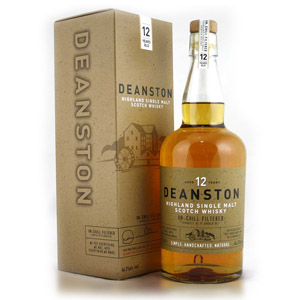
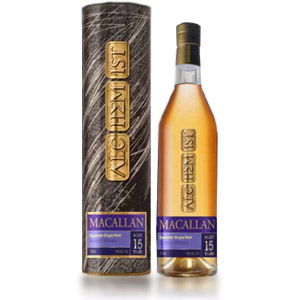

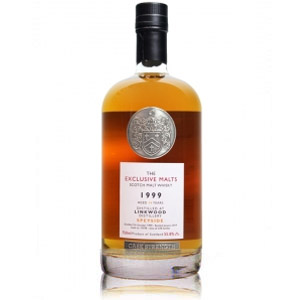
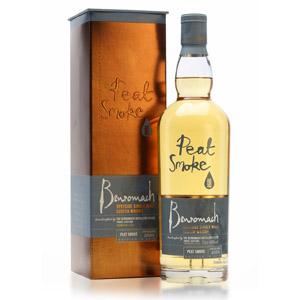
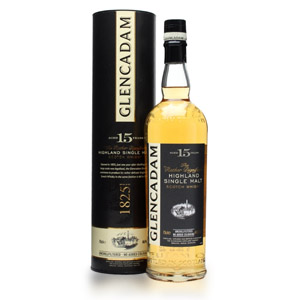
I have had interesting experiences with miniatures, and miniature bottles in general.
When I pop open something I’d like to save part of I’ll separate part of it into a 200ml glass container I have carefully cleaned. Then label and warehouse it for a rainy day. Somehow there haven’t been enough rainy days here in Washington state, and I have accumulated a large assortment of bottles. Though I think the culprit is that I buy quicker than I consume…
I tend to have the same results from these pour and store bottles, store bought miniatures, and freshly opened 750ml bottles… They all fall flat at first pour (Unfortunate because a 50ml only contains a single pour). I can count on one hand the number of bottles that tasted great upon first pour, and zero that taste the same after being opened and having a chance to oxygenate for at least a day, but preferably a solid week with about an inch of air in a standard 750ml bottle.
The initial tastings tend to be skewed in a variety of ways. Rather than list them I’ll just say the most predominate seems to be the flavor profile gets condensed, and the finish is much weaker.
I say all this because I started with 50ml bottles, but after a few years of experimenting I was never able to make a stored 50ml taste quite like the liquid from the original bottle. Insight to my obsession: I went to a jarring class to find out how they sanitize and protect jams and beer from improper bottling. I still pour 50’s to hand out to fellow connoisseurs but tell them to enjoy it quickly rather than shelf it.
I am not saying this to doubt your methodology, but rather possibly give insight that I view miniatures the same way that I view pictures in old newspapers… flawed, imprecise, but give you an idea of what is going on. I found (Courtesy of Ralfy) that the best way to combat the war on fresh bottles is to pour your dram, cover the glass, and let it sit for a while (half hour or more). I have had varying results but on average it seems to work if you have the patience.
Speaking of Patience: Hopefully someone has had the patience to read through my babbling and as a result will have themselves a more pleasant whisky experience.
Cheers to you all!
Very interesting! My experience hasn’t been quite so coherent. I have had several very bad results from plastic factory-produced 50ml miniatures (not a surprise there), but in general I haven’t noticed statistically negative trends in the miniatures I review. In fact, I’d say between 50ml minis, 30ml Master of Malt samples, 45ml Flaviar samples, poured samples from friends, and 50-100ml review samples from PR firms, only about 20% of my reviews are directly from full bottles. I can definitely remember miniatures (particularly Master of Malt ones and review samples, since those tend to be from “better” whiskies) that was I thoroughly impressed by. I’ve also had full bottles (like the recent Trader Joes 13-year) that were still exactly as miserable after several days of being open.
On the other hand, I have found in some full-sized bottles, that after a bit of oxidation (I usually notice this when the bottle is around half-empty) one or two new prominent flavors/aromas appear that weren’t noticeable in the first few pours. Thus far, this effect has not been strong enough to result in a change in review mark.
Still, I could probably improve my process by letting freshly-poured miniatures sit for awhile as you suggest. Thanks for the comment!
I agree with you about the new flavors/aromas starting when the bottle is half-empty. It may be in my head, but in my experience higher abv whisky (43-46%) tends to change for the better, while whisky with and abv of 40% tends to get sweeter, with many of the original tasting notes becoming less pronounced. I find the only exception to be Redbreast 12, which is always great to the last drop.
It should be noted that this could all be in my head for sure… and my fellow whisky buddies are just appeasing me because they get free whisky as we experiment.
But my first impressions of about a quarter to a third of newly opened bottles has been “crap what did I just spend all this money on.” Two weeks later I am amazed my shelf has been absent of this liquid gold (Or Amber). This has seemed to be especially true for young or NAS whiskies, and sherry bombs. Old and/or heavily peated whisky seems to not be quite as fazed, but everything still benefits from time in the glass.
Time and time again it seems like the richness and finish of a bottle operates on a sharp sided, flat top bell curve. Which is good to know if you ever see a bottle of something you always wanted to try at a bar… If its spendy, covered in dust and nearly empty it is probably past its prime and will also probably be a bit disappointing.
I haven’t tried this younger Deanston, but the older ones are really very good indeed. Keep persevering!
No comment on Deanston or this particular whiskey. I just wanted to say that the review is hilarious and beautifully written, too. Definitely a “Recommended,” not a “Try Before Buy.” Keep up the good work on this, one of my favorite, web sites.
I have a 50ml glass bottle of the old historic Deanston. Price on bottom tag reads historic Scotland £3.50. Not opened and just looking up info on what it is. May sample it on a cold Wintry evening soon!
poikaa
Noob you provide some of my most valued whisk reviews. After reading such high praise(s) (nearly universal) on the interwebz from the usual suspects combined with the tempting local Deanston prices…I had planned for my next bottle purchases. Your reviews of the Virgin Oak and the Deanston 12 are causing me pause. I wonder if a re-review of these bottles may be in order?
Precisely what I thought when I read this. Everyone on YouTube, that is the notable reviewers including Ralf, agree on this one. They all praise it. Locally it’s priced at $40. Great value for a 12 in these times. I also planed on purchasing this next. Now It gives me pause. It’s the most negative review I’ve read from you and it’s totally contrary in comparison to the YouTube reviewer crowd.
JJ, taste is subjective, and I don’t read the reviews of other reviewers (especially not before I publish something), since I don’t want outside opinions clouding my own, beyond “Hey try this, you might like it.” It’s also always possible to get a bad bottle/batch. I have been regularly disappointed by Deanston whiskies, which could mean I have some unique aversion to a taste or aroma compound that other people don’t mind. Hard to say. Give it a try and see what you think! 🙂 Cheers!
I actually toured the Deanston distillery last spring on our first trip to Scotland. I’m amazed I still like this stuff after the smell of that place. It definitely brings back memories every time I open the bottle. I’ll agree that the Virgin Oak is not nearly as good/bordering on bad. My friend tossed the contents of my Virgin Oak bottle in his newly acquired 2L charred oak barrel for a couple of weeks and it definitely improved it, but still not great.
Frankly this review is lousy and does not reflect any semblance of reality. Deanston 12 YO is a very good whisky. I will no longer read any of these reviews since you missed so badly here.
Tastes are subjective, people do not all like the same thing. I’ve always assumed that people learned such things in grade school, but people constantly surprise. You won’t be missed!